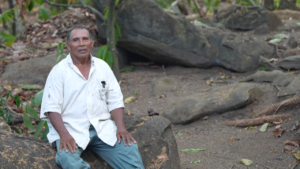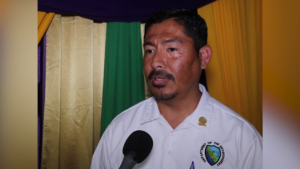Are Primitive Farming Techniques Responsible for Wildfires?
Slash-and-burn farming is an age-old practice that has proven to be more environmentally harmful than it has served any real purpose in agriculture. The wildfires that are being experienced in Toledo District are said to be fires that were being used to clear land for farming. Those fires reportedly got away and the devastation left in their wake has been astounding. While the Government of Belize has allotted a million dollars for relief efforts to families and farmers affected by the fires, there has to be a shift away from this destructive means of agriculture. News Five’s Isani Cayetano reports.
Isani Cayetano, Reporting
As a small farmer, it is important to understand the need to prepare land for cultivation. The slash-and-burn technique, a method of agriculture in which existing vegetation is cut down and burned off before new seeds are sown, has been practiced throughout much of the world. Shifting cultivation, as it is also known, is widely used in southern Belize, particularly in Toledo District. On the downside, it has significant environmental drawbacks.

Augustine Chub
Augustine Chub, Farmer, Indian Creek Village
“Sometimes I sit down in my field and say [to myself], what to do to try and change my way of doing the farming. From there, one day a person dropped in and he told me [that] I should change the way of doing farming, you know, so that I could… Yes, I could clean bush, I could chop bush, but I don’t have to burn the place.”
Augustine Chub is a farmer who has spent all his life planting and cultivating crops in Indian Creek Village. Over the years, he has seen the negative consequences of deforestation that have led to biodiversity loss, habitat destruction and soil erosion.
 Augustine Chub
Augustine Chub
“In the month of May, we used to burn bush like crazy. But dehn time deh we don’t worry much about the area. We seh bush da bush, we could burn down and clear out, you know, even if we chop or we noh chop, but we just let go fire and fire start get away and go miles and miles eena bush.”
Forests are home to diverse plant and animal species. When we clear them, we disrupt ecosystems and reduce biodiversity. Many of these species rely on forests for shelter, food and breeding.

Anthony Mai
Anthony Mai, Chief Environmental Officer
“Some of the wildlife has been distressed because of the heat wave and the fires, etc. And so, biodiversity loss is a concern to us. Water pollution, air quality, poor air quality, et cetera, are also major concerns, and then, to some degree, loss of forest covers.”
Slash-and-burn practices, as well as wildfires, destroy their habitat.

Anselmo Cholom
Anselmo Cholom, Village Councilor, Indian Creek
“When this fire burned down…, I believe it chased away all the animals, the animals that were here and, you know, the plants, it destroys the trees. So we will have to, it will take a few years to get back.”
 Initially, the ash from burned vegetation provides some fertilization. However, after several years of cultivation, soil fertility declines and weeds increase. This leads to diminishing crop yields.
Initially, the ash from burned vegetation provides some fertilization. However, after several years of cultivation, soil fertility declines and weeds increase. This leads to diminishing crop yields.
 Augustine Chub
Augustine Chub
“I learned to do farming with my dad. We underbrush and fall bush, we underbrush with machete axe. Lone man work. We fall bush acres and acres we cut down and we burn it and we plant it. Well, according to my dad, that is the quickest way to do farming and that is the fastest way that you don’t have the weeds right away because you burn all the seeds of the weeds because ih noh will come right away.”
 Slash-and-burn generates smoke and particulate matter, polluting the air. Without tree roots to hold the soil in place, erosion occurs. Rainwater washes away fertile topsoil, affecting crop productivity.
Slash-and-burn generates smoke and particulate matter, polluting the air. Without tree roots to hold the soil in place, erosion occurs. Rainwater washes away fertile topsoil, affecting crop productivity.
 Anthony Mai
Anthony Mai
“One of the major concerns that we have with regards to the impacts that the fire is having and will have is that of the accumulation of ash on the forest floor. As you know, we are entering into the rainy season and as soon as the rainy season starts, the ash will wash into the drains, the drains to the creeks, creeks to rivers, and eventually to the sea. So that is something critical we are thinking about now, in terms of how to measure the impact that that will cause and so we have identified it as a concern.”
 In San Miguel, brushfire has decimated farmlands, including fields of crop belonging to Santiago Cus.
In San Miguel, brushfire has decimated farmlands, including fields of crop belonging to Santiago Cus.

Santiago Cus
Santiago Cus, Farmer, San Miguel Village
“Just recently, Thursday, the fire entered this land, this land here and then burnt up all of the cacao fields, everything it burned up, couldn’t catch the fire. The fire passed and run. I have seven hundred plants of cacao by the boundary line there, all burnt up. I got Inga and then I got my cornfield all burnt up. The Inga was right over there but the help of the people and the helicopter was here on Thursday and that helped a lot. Without the helicopter that piece would have all been finished to ashes. But right now with the help of the helicopter, it saved that piece where I have my pig, I have my bees. I have a lee shed there for my cornfield saved, but all this burn up.”
 While traditional slash-and-burn practices allowed areas to recover over time, modern techniques often lead to permanent deforestation. Sustainable alternatives like agro forestry and conservation farming are more environmentally friendly. Sustainable land management practices are crucial for both livelihoods and the health of the planet.
While traditional slash-and-burn practices allowed areas to recover over time, modern techniques often lead to permanent deforestation. Sustainable alternatives like agro forestry and conservation farming are more environmentally friendly. Sustainable land management practices are crucial for both livelihoods and the health of the planet.
Isani Cayetano for News Five.






Facebook Comments